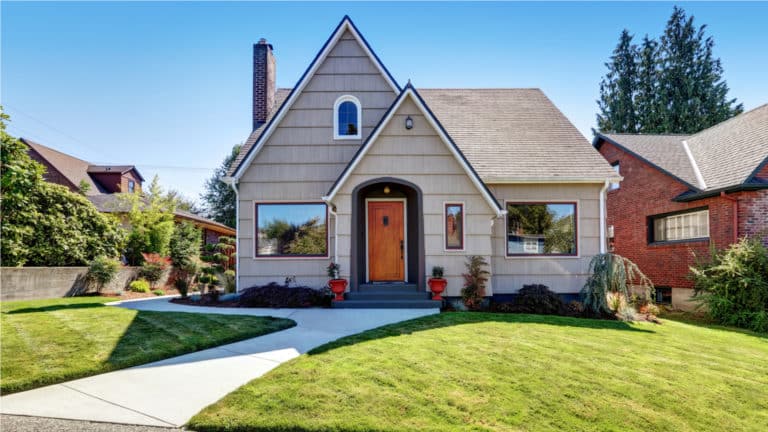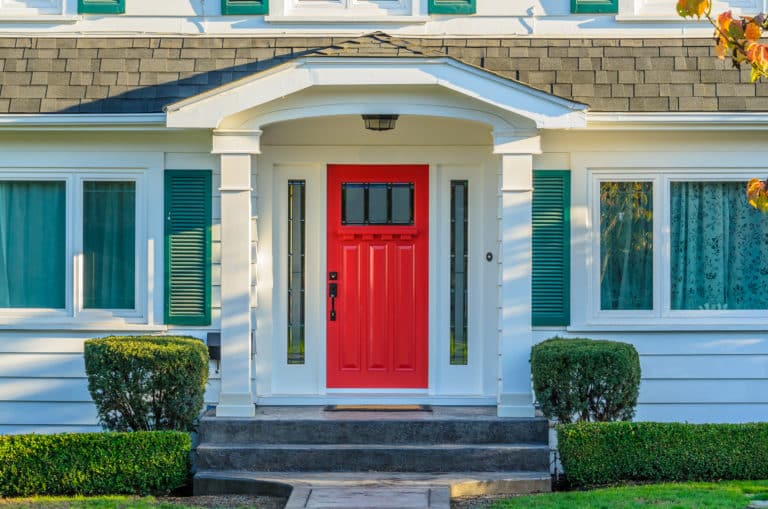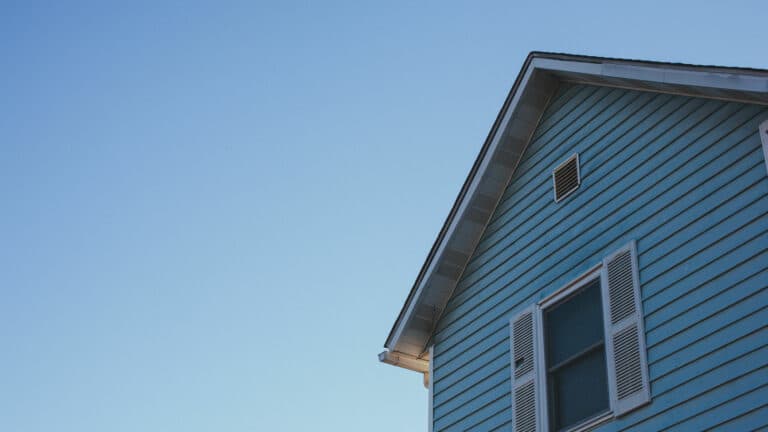What does homeowners insurance cover?
It’s a question you want to answer before you’re knee-deep into buying your first home. Understanding the ins and outs of homeowners insurance before you purchase a home can help you find the best coverage possible.
This article will offer some pointers on what to consider to find the right homeowners policy for you. We’ll go over what homeowners insurance covers, types of homeowners insurance, endorsements, how to choose the right homeowners insurance policy and, perhaps most importantly, the kind of coverage you may need.
What is Homeowners Insurance?
Homeowners insurance, also often called “home insurance” or “hazard insurance,” provides coverage for your home and personal belongings in the event of damage or certain perils (such as fires, lightning strikes, windstorms and hail).
The main functions of homeowners insurance include:
- Repairing your house, yard and other structures
- Repairing or replacing your personal property
- Liability for injuries or damage to someone else’s property
While natural disasters do fall under the umbrella of homeowners insurance, it’s important to know that homeowners insurance does not typically cover damage caused by earthquakes and floods. You’ll have to get separate earthquake insurance and/or flood insurance to be covered for those two natural disasters specifically.
What Does Homeowners Insurance Cover?
So what parts of a home does homeowners insurance specifically cover? Take a look:
- Dwelling protection: As the name implies, this covers damage to your home and attached structures, such as the foundation, walls and roof of a house.
- Other structures: Most homeowners policies also cover standalone structures on your property, such as sheds or fences.
- Personal property: Homeowners insurance also covers items that you keep in your home. Most homeowners insurance covers stolen, damaged or destroyed belongings.
- Additional living expenses: In the event that you cannot live in your home after a hazardous event or covered natural disaster, homeowners insurance often helps with temporary living expenses. This is sometimes referred to as “loss of use coverage.”
- Liability: If you unintentionally injure someone or cause property damage, your homeowners insurance can cover the bills for that damage.
- Medical payments: If someone on your property gets injured, your homeowners insurance may cover their medical bills.
What Are the Types of Homeowners Insurance Policies?
Now that you know what your homeowners insurance could potentially cover, let’s take a look at each of the eight types of homeowners insurance policies in detail.
HO3 Insurance
HO3 insurance — also called an “open perils policy” — is a fairly standard homeowners insurance policy. It covers all perils except for those that your insurance company specifically excludes. HO3 insurance usually covers damage stemming from these main causes:
- Fire
- Lightning
- Hail
- Windstorms
- Volcanic eruptions
- Ice, snow or sleet
- Explosions
- Riots or civil commotion
- Aircraft or vehicles
- Smoke
- Malicious mischief or vandalism
- Theft
- Falling objects
- Discharge of water or steam
- Sudden and accidental household system damage (e.g., freezing of home systems)
- Accidental damage from electrical current
A few common HO3 policy exclusions include the following:
- Earth movement (earthquakes, sinkholes and mud flow)
- Floods, sewer backup or water seeping into a home’s foundation
- Home demolition or seizure required by law, such as by a government agency or public authority
An HO3 policy pays you actual cash value for your contents. This means your insurer takes into account the depreciation of your item and pays you the amount your used items would sell for on the open market.
It’s a good idea to check with the different insurance companies to understand their specific inclusions and exclusions. And, always read the fine print before you purchase!
HO5 Insurance
HO5 insurance provides the most extensive homeowners coverage. You can typically only get this type of coverage if you have a well-maintained home in a low-risk area.
Similar to an HO3 policy, insurers write HO5 insurance on an open-perils basis. Again, your insurer covers damage to your home and personal property as long as the peril is not listed as an exclusion in the policy.
But unlike an HO3 policy, HO5 policies cover your contents based on the cost of a new replacement, rather than its current value. For example, let’s say a small kitchen fire wipes out your stove. Even if your stovetop is a few years old, your HO5 policy will cover a brand-new replacement.
HO1 and HO2 Insurance
HO1 and HO2 insurance covers only a handful of potential perils, such as damage from:
- Fire
- Smoke
- Explosions
- Lightning
- Hail
- Windstorms
- Theft
- Vandalism
- Vehicles and aircraft
- Riots and civil commotion
- Volcanic eruption
As you can see, you don’t get quite as many coverage options with HO1 and HO2 insurance. While they typically only provide dwelling protection, you can usually buy personal property coverage for an additional cost.
You may wonder about the specific differences between HO1 and HO2 policies. Generally speaking, an HO2 policy offers more coverage than an HO1 policy. But to know the exact differences, you may consider checking with your insurance company for specific information about their HO1 and HO2 inclusions and exclusions.
Other Policy Types
Let’s go over the rest of the policy types. Even if they may not specifically apply to your needs right now — it’s just handy information to have!
- HO4 insurance: What’s another name for HO4 insurance? Renters insurance! Renters insurance policies cover personal property and liability, but don’t cover the physical structure of the house. Some HO4 policies also include loss of use coverage.
- HO6 insurance: Condominium owners can get HO6 insurance. HO6 policies cover the walls, floors and ceiling of your unit but not the rest of your building. You’ll also get personal property and liability coverage. Some HO6 policies also include loss of use coverage.
- HO7 insurance: You can get an HO7 policy if you own a mobile home or manufactured home. They offer dwelling protection coverage, as well as the following coverages: other structures, personal property, liability and potentially loss of use.
- HO8 insurance: Older homes fall into a specially designed homeowners policy because of their tendency to have been built to “looser” code standards than more recently built homes. They only cover basic perils like those listed in HO1 policies and usually apply to historical homes or homes designated as registered landmarks.
Your policy’s fine print might lull you to sleep, but you may want to take the time to read it now instead of learning about an exclusion after the fact.
What is Not Covered by Homeowners Insurance?
While we’ve already gone over a few types of incidents not covered by homeowners insurance, let’s take a closer look at some other common policy exclusions:
- Intentional damage to your own property
- Flooding, including drain and sewer backup
- Earthquakes, landslides and sinkholes
- Infestations by birds, termites or rodents
- Effects of rust, rot, fungus or mold
- Damage caused by smog or smoke from industrial or agricultural operations
- Wear and tear or neglect
- Nuclear hazards
- Government action, including war
- Power failures
Ultimately, you want zero surprises down the road. Your policy’s fine print might lull you to sleep, but you may want to take the time to read it now instead of learning about an exclusion after the fact.
Expand Your Coverage with Endorsements
One smart way to account for what is not covered by your homeowners insurance policy is with an endorsement. An insurance endorsement, also called a “rider,” changes your existing insurance policy to address items that aren’t covered.
An endorsement might include additional coverage for something that would ordinarily be excluded from the original policy. It also might cover exclusions, which eliminate coverage for certain types of claims. An endorsement may also expand the scope of your existing coverage, which is called a “modification of coverage.”
You might want to add one or more of the following endorsements to your coverage:
- Scheduled personal property: This endorsement adds full coverage to items in which the value exceeds the limits of personal property coverage in a standard homeowners policy.
- Ordinance or law coverage: Ordinance or law coverage covers the cost to rebuild a destroyed home after a covered loss with upgrades so that it meets the most up-to-date building codes.
- Water backup coverage: This protects your home and personal property due to water damage from a faulty sump pump, drainage issue or sewer backup or overflow.
- Equipment breakdown coverage: In case of mechanical or electrical breakdown, this can help cover the costs to repair or replace damaged or broken-down equipment after a covered incident.
- Service line protection: If service lines (such as power lines; phone and cable lines; and water and sewer pipes) become damaged on your property, service line protection can cover the associated costs for repair.
- Identity fraud expense coverage: If you become the victim of identity fraud, it can cost a lot to “fix” the issue. An identity fraud expense endorsement can provide coverage for these expenses if they occur during your policy period.
Always remember that an endorsement alters your insurance policy and becomes part of your legal insurance agreement until it expires – unless it carries a specific or limited term of validity.
How Much Homeowners Insurance Do You Need?
Not surprisingly, many homeowners ask, “How much homeowners insurance do I need?” Of course, the answer varies depending upon individual needs and situations, but there are several common areas you’ll want to take into account when making that determination.
Simply put, you’ll want to consider having enough homeowner’s insurance to cover your home and your stuff, with liability coverage as well. A sufficient amount of coverage would help you:
- Rebuild your home. You’ll want enough dwelling coverage to equal your home’s replacement cost — the amount it would cost to rebuild your home. And base this coverage on a value above your home’s original price, because it could cost more to rebuild if the unthinkable happens.
- Replace your belongings. Consider writing down a detailed list of everything you own, taking pictures of it and paying close attention to the most expensive items.
- Cover personal liability.Your liability coverage can cover a wide range of incidents if someone were to be injured on your property. Most homeowners insurance policies carry $100,000 in liability coverage for incidents like dog bites and accidents like slips and falls.
- Reimburse your living expenses: Also called “additional living expenses coverage,” you may want to make sure you have coverage for another place to live while you repair or rebuild your home, which could take months (or longer). If you’re the victim of a fire, for example, you may have to live in a hotel and eat at restaurants. Additional coverage between 10% and 30% for these costs can ease the burden of putting the entire cost on your own credit cards.
Choose the Right Homeowners Insurance Coverage
So what type of homeowners insurance is right for you? Consider researching your options thoroughly to ensure you get the right insurance coverage for your needs. A few final tips:
- Check to see what your car insurance covers. Your homeowners insurance won’t cover incidents related to autos (with the possible exception of lawnmowers and other related items).
- Low cost shouldn’t be the sole deciding factor in choosing a homeowners insurance policy. Be sure to consider which option fits your needs based on your location, property and other factors unique to your situation.
Morty can help you learn about topics ranging from homeowners insurance, mortgage insurance and closing on your mortgage. And when you’re ready to buy a home, Morty can guide you there, too.







